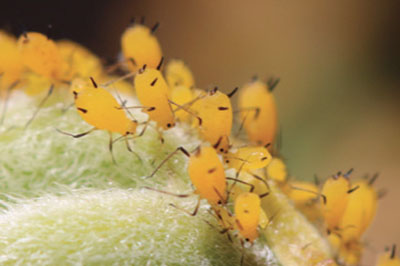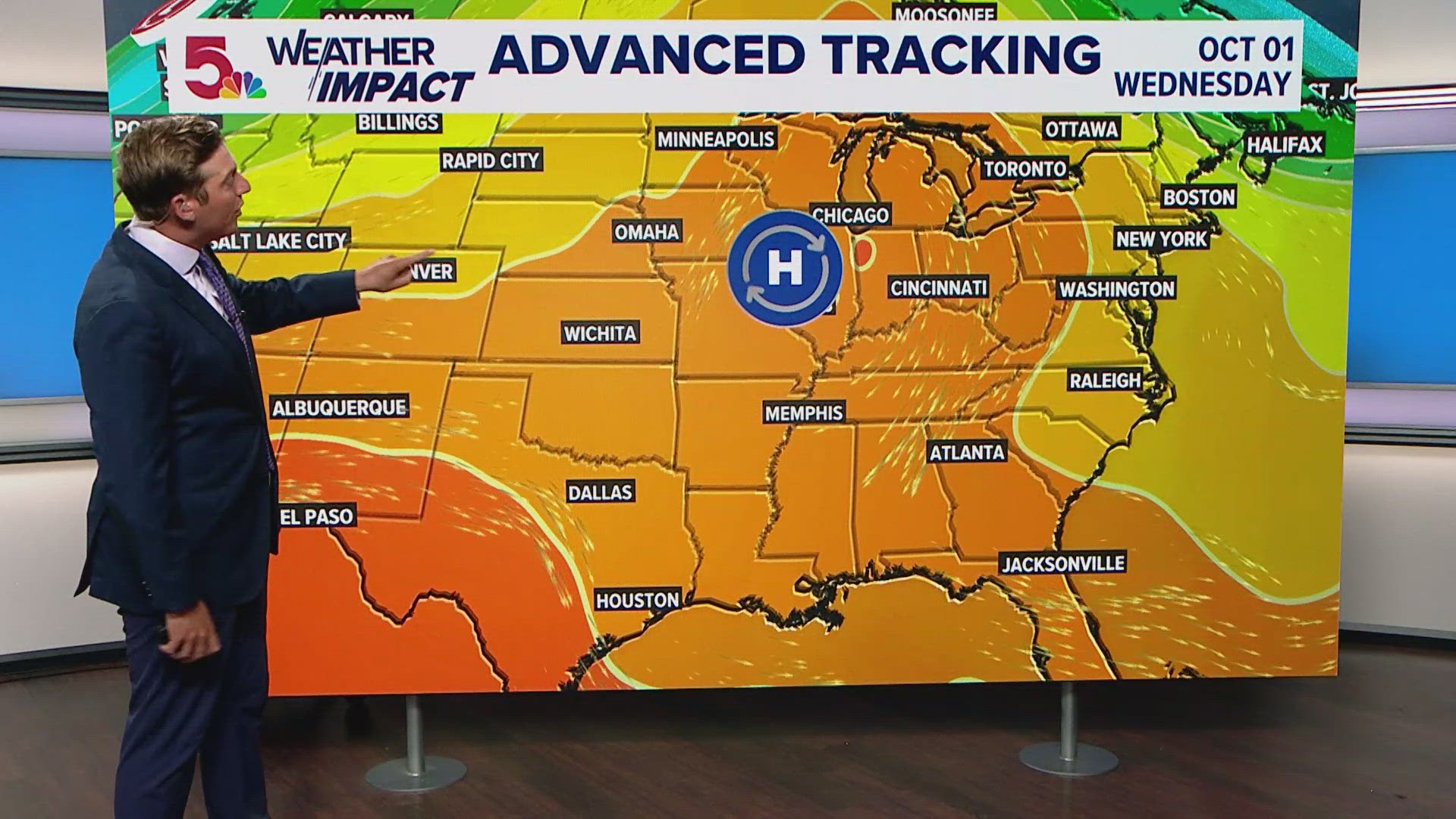Report on the Impact of Funding Reductions for Soil and Water Conservation Districts on Sustainable Development Goals in Illinois
Executive Summary
Recent state budget cuts to Illinois’ Soil and Water Conservation Districts (SWCDs) present a significant threat to the state’s progress toward key United Nations Sustainable Development Goals (SDGs). For decades, SWCDs have served as the primary local entities connecting farmers with conservation programs designed to protect natural resources. A funding reduction of nearly 50% over two years, from approximately $13 million to $7 million, compromises the ability of these districts to support sustainable agriculture, protect ecosystems, and ensure clean water, directly undermining SDG 2 (Zero Hunger), SDG 6 (Clean Water and Sanitation), SDG 15 (Life on Land), and SDG 17 (Partnerships for the Goals).
Threats to SDG 15: Life on Land
The core mission of SWCDs is to combat land degradation, a central objective of SDG 15. Established in the wake of the 1930s Dust Bowl, their work is fundamental to preventing soil erosion and preserving terrestrial ecosystems. The current funding crisis jeopardizes this mission.
- Increased Soil Erosion: With reduced operational capacity, SWCDs can offer less technical support to farmers for implementing conservation practices. This directly increases the risk of soil degradation and erosion.
- Risk of Desertification and Dust Storms: A recent dust storm in central Illinois, attributed to poor soil health, highlights the tangible consequences of neglecting soil conservation. Eliot Clay, of the Association of Illinois Soil and Water Conservation Districts, noted this event was a “direct result of poor soil health,” signifying a failure to meet the targets of SDG 15.3 (combat desertification and restore degraded land and soil).
- Loss of Biodiversity: Conservation practices supported by SWCDs, such as filter strips, also serve as habitats, contributing to biodiversity on agricultural landscapes. Reduced implementation threatens these ecosystems.
Implications for SDG 2 (Zero Hunger) and SDG 6 (Clean Water and Sanitation)
The health of soil and water resources is inextricably linked to sustainable food production and public health. The impairment of SWCD functions creates a cascading negative impact on both SDG 2 and SDG 6.
- Threat to Sustainable Agriculture (SDG 2): Healthy soil is the foundation of agricultural productivity. By failing to support conservation, the state risks long-term declines in soil fertility, which endangers the sustainability of food systems and the goal of achieving zero hunger. Farmers like Chad Wallace depend on SWCDs to identify and implement programs that ensure the long-term viability of their land.
- Degradation of Water Quality (SDG 6): SWCDs are instrumental in promoting practices that reduce agricultural runoff. This includes the implementation of filter strips to slow sediment and pollution and programs focused on nutrient reduction. The contrast with well-funded districts in Iowa, which effectively target nitrate reduction, demonstrates the critical role of state resources in achieving clean water objectives.
- Reduced Access to Clean Water: Failure to manage agricultural runoff leads to the contamination of nearby water bodies, affecting water quality for downstream communities and ecosystems, in direct opposition to the goals of SDG 6.
Erosion of SDG 17: Partnerships for the Goals
SWCDs exemplify the multi-stakeholder partnerships required by SDG 17. They function as trusted, local intermediaries that connect landowners with state and federal conservation initiatives, including those from the Natural Resources Conservation Service (NRCS).
- Breakdown of Trust and Collaboration: SWCD staff are often community members who have built long-term, trusted relationships with local farmers. This trust is essential for encouraging the adoption of new conservation methods. As noted by experts, farmers are more receptive to advice from a known local peer than a distant government official.
- Weakened Institutional Capacity: The funding cuts, which allot only $40,000 per district for all operational costs, are leading to imminent layoffs. This dismantles the institutional framework necessary for these partnerships to function. This issue is compounded by concurrent workforce reductions and budget cuts at the federal NRCS.
- Loss of Technical Expertise: Farmers rely on the specialized knowledge of SWCD officers to navigate complex conservation programs and ensure legal compliance. The loss of this expertise leaves farmers without a necessary support system, hindering the collective effort toward sustainable land management.
1. Which SDGs are addressed or connected to the issues highlighted in the article?
SDG 2: Zero Hunger
- The article focuses on agricultural practices and the health of farmland soil. Sustainable agriculture is essential for food security. The article states, “That soil, I mean, that is Illinois’ livelihood, literally flying in the breeze,” directly linking soil health to the economic foundation of farming and, by extension, food production.
SDG 6: Clean Water and Sanitation
- The article explicitly mentions the role of conservation programs in protecting water quality. It describes how filter strips are used to “slow sediment and pollution from entering nearby waters” and notes that in Iowa, conservation efforts are “focused on nutrient reduction, and specifically nitrate reduction.”
SDG 13: Climate Action
- The article discusses the increased risk of “dust storms” as a direct result of poor soil health. These are climate-related hazards, and the article highlights how conservation practices build resilience against them. The mention of a dust storm “at a magnitude the city hadn’t experienced since the Dust Bowl” points to an extreme weather event linked to land management.
SDG 15: Life on Land
- This is a central theme of the article. The entire purpose of the Soil and Water Conservation Districts (SWCDs) since the Dust Bowl has been to “slow down soil erosion and promote conservation.” The article’s main concern is that funding cuts will lead to “poor soil health,” soil that will “dry up and blow away,” which is a form of land degradation.
SDG 17: Partnerships for the Goals
- The article describes the SWCDs as a crucial partnership model. They are a “subdivision of the state government” that connects farmers to programs, grants, and funding from various sources, including state and federal. The article emphasizes the importance of these local institutions in building trust and implementing conservation, stating, “They’re often the face of conservation in communities.” The funding cuts highlight a breakdown in the financial support for these vital partnerships.
2. What specific targets under those SDGs can be identified based on the article’s content?
SDG 2: Zero Hunger
- Target 2.4: By 2030, ensure sustainable food production systems and implement resilient agricultural practices that increase productivity and production, that help maintain ecosystems, that strengthen capacity for adaptation to climate change, extreme weather, drought, flooding and other disasters and that progressively improve land and soil quality.
- Explanation: The work of SWCDs to “promote conservation” and help farmers implement practices like “filter strips” directly supports resilient agricultural practices. The article’s concern over “poor soil health” and “dust storms” shows the threat to sustainable food production and the need to improve land and soil quality.
SDG 6: Clean Water and Sanitation
- Target 6.3: By 2030, improve water quality by reducing pollution, eliminating dumping and minimizing release of hazardous chemicals and materials…
- Explanation: The article mentions conservation practices aimed at reducing agricultural pollution. The use of “filter strips” to “slow sediment and pollution from entering nearby waters” and Iowa’s focus on “nitrate reduction” are direct actions to improve water quality by tackling non-point source pollution from farms.
SDG 13: Climate Action
- Target 13.1: Strengthen resilience and adaptive capacity to climate-related hazards and natural disasters in all countries.
- Explanation: The article identifies “dust storms” as a significant hazard resulting from poor land management. The conservation work promoted by SWCDs is a key strategy for strengthening the resilience of agricultural lands to wind erosion, thus reducing the risk and impact of such disasters.
SDG 15: Life on Land
- Target 15.3: By 2030, combat desertification, restore degraded land and soil, including land affected by desertification, drought and floods, and strive to achieve a land degradation-neutral world.
- Explanation: This target is at the core of the article. The historical mission of SWCDs to “slow down soil erosion” and the current fear that soil could “dry up and blow away” are direct references to combating land degradation. The article describes the loss of topsoil in dust storms as “a direct result of poor soil health,” which is the problem this target aims to solve.
SDG 17: Partnerships for the Goals
- Target 17.17: Encourage and promote effective public, public-private and civil society partnerships, building on the experience and resourcing strategies of partnerships.
- Explanation: The SWCDs are presented as an effective public-private partnership model, connecting government resources with farmers. The article highlights their effectiveness, noting they “can be more effective than most federal conservation programs” because they are “run by people in the community who can directly build relationships with farmers.” The funding crisis discussed is a direct challenge to the resourcing strategy of this partnership.
3. Are there any indicators mentioned or implied in the article that can be used to measure progress towards the identified targets?
Indicators for SDG 2 (Target 2.4) and SDG 15 (Target 15.3)
- Proportion of agricultural land under productive and sustainable agriculture: This can be measured by the adoption of conservation practices. The article mentions farmers taking “part of their land out of crop production and into filter strips” as a positive indicator.
- Land degradation: The article provides clear negative indicators of land degradation, such as “poor soil health,” “soil erosion,” and the occurrence of “dust storms” caused by “dust from agricultural fields.” The frequency and magnitude of these events serve as a direct measure of failure to meet the target.
Indicators for SDG 6 (Target 6.3)
- Water quality measurements: The article implies the use of water quality indicators by mentioning efforts toward “nutrient reduction, and specifically nitrate reduction” and preventing “sediment and pollution from entering nearby waters.” Measuring levels of nitrates and sediment in water bodies adjacent to farmland would be a direct indicator.
Indicators for SDG 13 (Target 13.1)
- Occurrence of natural disasters: The article points to the “dust storm at a magnitude the city hadn’t experienced since the Dust Bowl” as a key indicator of a lack of resilience. Tracking the frequency and severity of such dust storms can measure progress (or lack thereof).
Indicators for SDG 17 (Target 17.17)
- Amount of financial resources for partnerships: The article provides a direct financial indicator. It states that state funding for SWCDs was cut “from nearly $13 million to about $7 million,” and that the current allotment is “about $40,000 per district.” This funding level is a key indicator of the state’s support for this partnership.
- Institutional capacity: The article implies an indicator related to human resources. The threat of “layoffs” and the statement that each district ideally needs “two full-time officers” suggest that the number of staff at SWCDs is a measure of their capacity to function effectively.
4. Create a table with three columns titled ‘SDGs, Targets and Indicators” to present the findings from analyzing the article.
| SDGs | Targets | Indicators |
|---|---|---|
| SDG 2: Zero Hunger | 2.4: Ensure sustainable food production systems and implement resilient agricultural practices. |
|
| SDG 6: Clean Water and Sanitation | 6.3: Improve water quality by reducing pollution. |
|
| SDG 13: Climate Action | 13.1: Strengthen resilience and adaptive capacity to climate-related hazards. |
|
| SDG 15: Life on Land | 15.3: Combat desertification, restore degraded land and soil. |
|
| SDG 17: Partnerships for the Goals | 17.17: Encourage and promote effective public, public-private and civil society partnerships. |
|
Source: ipmnewsroom.org







